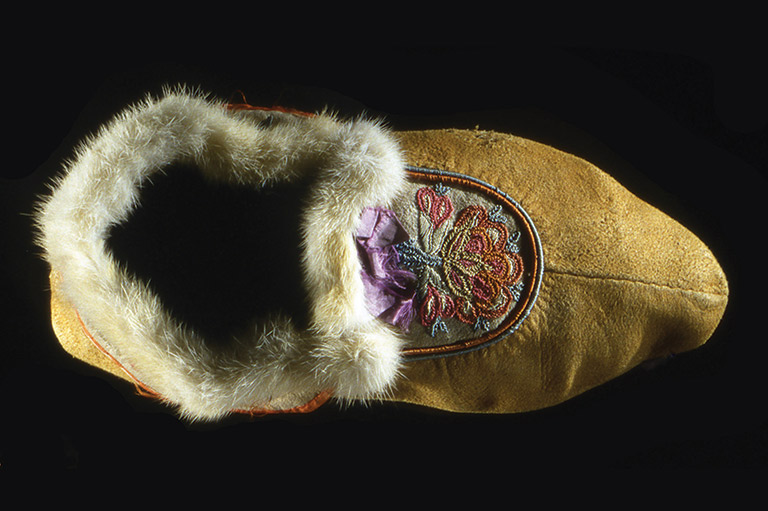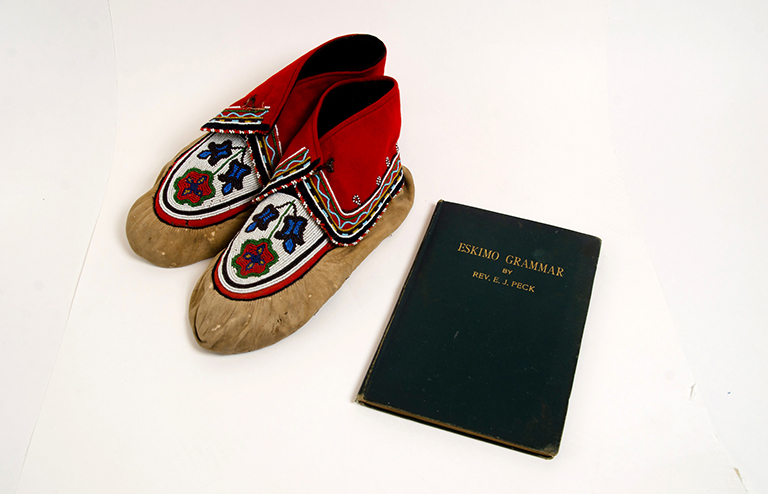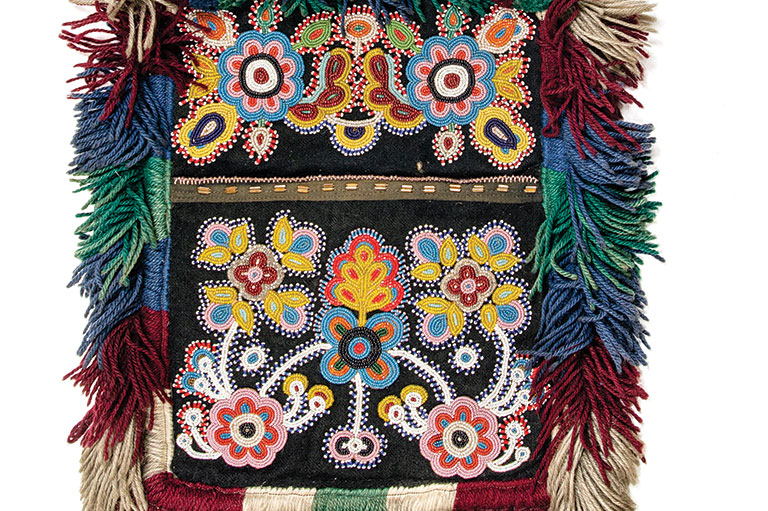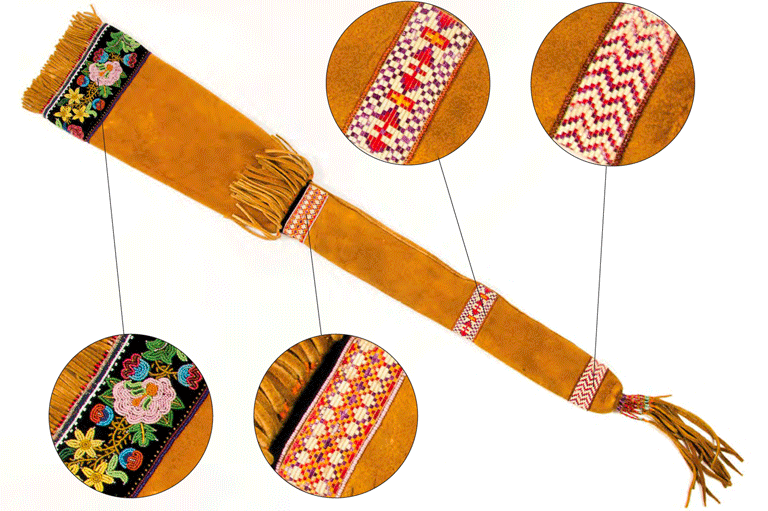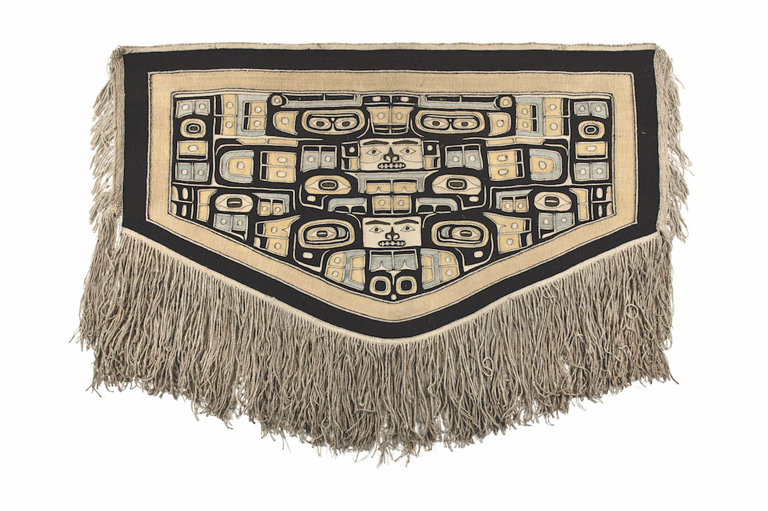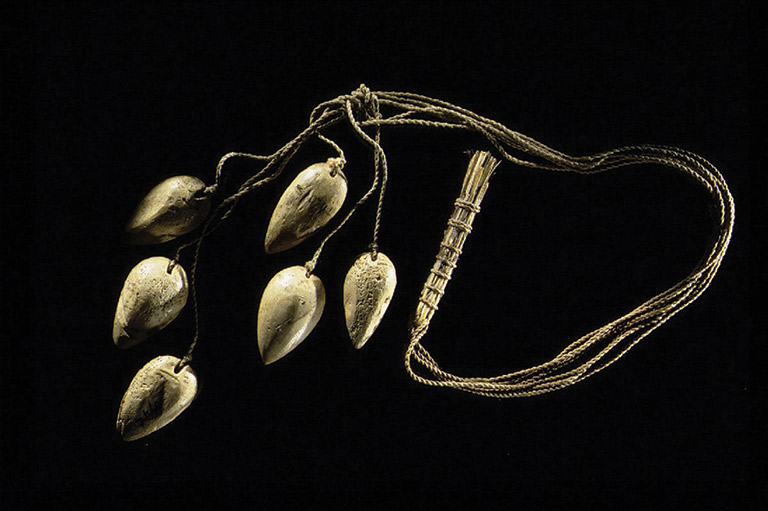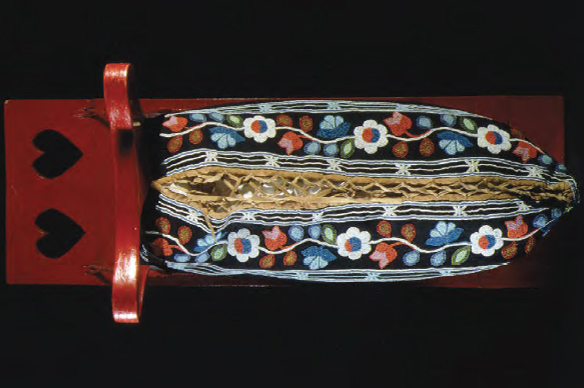Moccasins
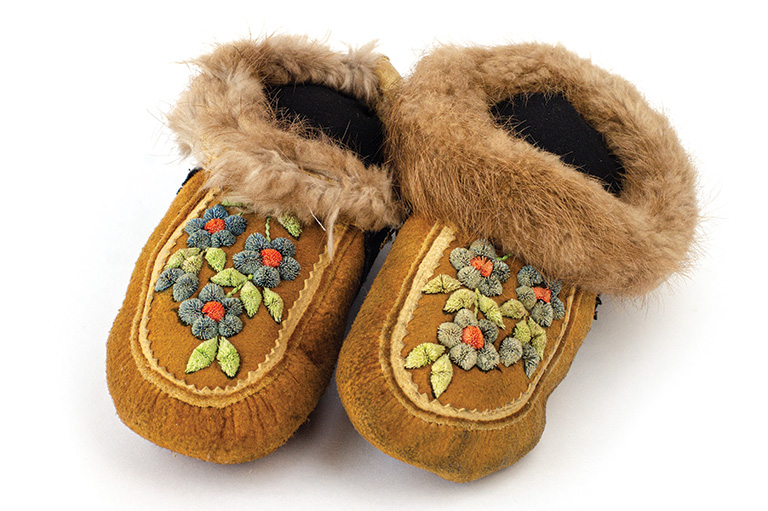
Moccasins are among the most abundant articles of clothing housed in Canadian museum collections, including the HBC Museum Collection, which has 142 pairs! They were also one of the first things European fur traders incorporated into their daily lives when they realized that their footwear was unsuited for the rugged terrain of much of what we now call Canada.
Many different cultural groups make moccasins, and they therefore come in a wide variety of styles. They can be decorated with beadwork, quillwork, or — in this case — moosehair tufting. This pair was made in Fort Providence, N.W.T., from smoked moosehide and is trimmed with beaver fur.
The tufting is made by pulling dyed moosehair into bundles and laying them on the backing material. Thread or sinew is then passed up through the backing around the bundle, and the hairs stand up into a tuft when pulled tight. The bundles are placed close together, and the ends of the tufts are trimmed to the desired shape. Like beadwork and quillwork, tufting is an artistic skill that takes patience and practice.
Themes associated with this article
Advertisement

